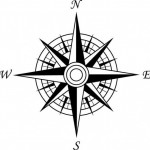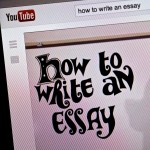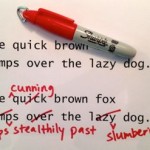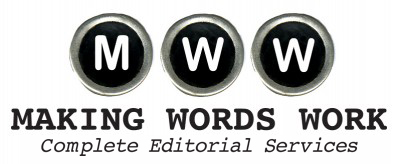Archive for
 Here’s what I love about writing. Yesterday, I sat down at my computer thinking about a conversation about online education I had with a neighbor, which led me to search YouTube for videos about editing and writing. Next thing I know, I’m remembering my high school A.P. English teacher and trying to recall whether she wore black and white saddle shoes or red Converse high-tops. Footwear issues aside, I am happily surprised to find myself writing about a beloved teacher I haven’t thought about in years, an incredible woman who died young but influenced my whole life.
Here’s what I love about writing. Yesterday, I sat down at my computer thinking about a conversation about online education I had with a neighbor, which led me to search YouTube for videos about editing and writing. Next thing I know, I’m remembering my high school A.P. English teacher and trying to recall whether she wore black and white saddle shoes or red Converse high-tops. Footwear issues aside, I am happily surprised to find myself writing about a beloved teacher I haven’t thought about in years, an incredible woman who died young but influenced my whole life.
I finish the blog post having danced down memory lane and ended up in a place I never, ever expected. It was a treat, really. Yet if I hadn’t plonked myself down in front my keyboard and started typing, no pre-formed conclusions in mind, I wouldn’t have started down the path, let alone end up where I did.
I’ve spent the last few years focused on visual arts, so I’m familiar with the concept and the experience of starting with a blank canvas and letting an image or impression emerge. When the right side of my brain kicks in, I never know where I’m going to end up. Time races and yet stands still; I am both completely focused and entirely relaxed. With painting, my right brain leads me to reach for new colors and different brushes to explore ideas, shapes, and marks on the canvas. When I’m writing, it helps me gather images, associations, and connections from all directions and weave them together with linguistic threads. In both painting and writing, the failures are as important as the successes. Sometimes a canvas or a sentence – or the whole darn thing – needs to be deleted with white gesso or a few keystrokes. Either way, the shadow of that erasure still exists. It beckons me down an unexplored path and leads me on a journey that, somehow, always turns out to be exactly where I need to go.
 I caught up with my neighbor the other day, hearing about the online classes she was taking for a graduate degree in nutrition. We chatted about the pros and cons of going to school online – more flexibility and independence, less connection with professors and peers. Then my neighbor recounted a recent conversation with her teenage son. He wanted to know why she was bothering to get a degree at all.
I caught up with my neighbor the other day, hearing about the online classes she was taking for a graduate degree in nutrition. We chatted about the pros and cons of going to school online – more flexibility and independence, less connection with professors and peers. Then my neighbor recounted a recent conversation with her teenage son. He wanted to know why she was bothering to get a degree at all.
“Why don’t you just go to YouTube to find out you want to know?” he asked. “That’s what everyone does these days.”
He’s probably right – to a point. I would be hard-pressed to think of any subject that wasn’t covered in some way by an online video or other tutorial. But what about editing? Writing? Can you learn those skills from a YouTube video? I logged on to find out.
A search for “How to edit an article” pulled up video clips offering tips for accessing or editing text in Wikipedia, Joomla, eZ Publish and the like. “How to edit an essay” brought up, among other things, a four-minute animated video from Education-Portal.com offering tips for peer-editing a paper, including understanding the author’s intent and making sure the essay flows “in a way that makes sense and is consistent with the overall theme and thesis of the piece.” Sound advice – if you know anything about themes and theses, that is.
How about writing? Yep, that’s covered, too. You can watch a video that uses a dating analogy (it’s important to have a good introduction or “pick up” line) or one with an academic approach that discusses the need for a clear thesis, balanced supporting evidence, and a power-packed conclusion, all achievable by starting with a detailed – but not too detailed – outline.
Seems my neighbor’s son is right: You can learn just about anything by searching for it online. But before I put the cap on my editing pen for good –or suggest that my friend bail on her degree program – I remembered Donna Underwood. Donna, as we were allowed to address her, was my A.P. English teacher during my senior year in high school. She was smart, funny, witty, kind, and frank. She wore little round glasses high-top sneakers. She loved to share her “wids of wordsdom” about writing, literature, film, and life itself. Donna also was a huge fan of James Dean, and had a life-sized poster of him in the classroom.
I always credit Donna for teaching me how to think analytically. She encouraged all of her students to write clearly and actively, to find a thesis and prove it, and to answer the critical question, “So what?” It was hard work, and we worked as hard as we could. Nothing was sweeter than a glowing comment on a paper Donna had just marked.
Like James Dean, Donna Underwood died young. A hereditary form of stomach cancer took her life, but not before my classmates and I strutted our stuff at her bedside in all our prom finery. And not before we could share with her our A.P. exam results: Top scores for all. Thanks, Donna.
Today, decades later, whether I’m helping my kids with a writing assignment or working on website copy for a client, I keep Donna Underwood’s gentle but firm voice in mind: Do these words make sense? Is the point being made in most succinct and engaging way possible? Is there just a touch of poetry somewhere in the lines? And most important of all, has the question, “So what?” been answered?
If I can say “yes” to these questions, I’ve done my job. For that, I’d like to thank Donna Underwood and her precious, priceless wids of wordsdom – and challenge anyone to find such a teacher on YouTube.
 I’m a pretty good typist. I sometimes joke that since I can’t sing or dance, it’s probably my only skill that I could perform in a talent show (not that I’ll ever be in one). I tell my kids that typing is the most important class I took in high school, noting quietly to myself that they started learning the skill in first grade. Oh, how the world has changed.
I’m a pretty good typist. I sometimes joke that since I can’t sing or dance, it’s probably my only skill that I could perform in a talent show (not that I’ll ever be in one). I tell my kids that typing is the most important class I took in high school, noting quietly to myself that they started learning the skill in first grade. Oh, how the world has changed.
But these days, the synapses that I formed by repeatedly typing, “The quick brown fox jumped over the lazy dog” under the watchful eye of the unsmiling Mrs. Booth, are shorting out. Although I’ve been developing and strengthening the muscle memory between my fingers and brain for decades, I find my typing reflexes are being sorely tested. The problem? I have too many – and too many different — keyboards.
Here’s the current tally: my laptop keyboard, a full-size desktop keyboard, an iPad screen (for typing in both landscape and portrait view), an attachable iPad keyboard, and my iPhone (again, both landscape and portrait view). That’s seven variations on the traditional theme. No wonder my brain is confused.
When I use my laptop and or a full-size keyboard, I employ the official five-finger technique that would make Mrs. Booth proud. I try to stick with the same system on the smaller iPad keyboard, but often my fingers feel squished and seem to fight over the keys. When I’m typing on the iPad (choosing between landscape or portrait view), I resort to the “hunt and peck” approach, using between two and eight fingers to strike the on-screen “keys.” If I’m texting on my phone, I tap out a message with either my right index finger (portrait view) or both my thumbs (landscape).
Whew.
All these typing techniques are making my brain feel addled. As I find myself stopping to think – and search – for the exclamation point or semi-colon key, my confidence in my typing skills is starting to wane. An action/reaction that was once as instinctive and effortless as breathing now leaves me gasping.
I’m sure my kids will never face this problem. After all, the synapses in their young brains are being wired to move easily and efficiently between keyboards of all shapes and sizes. Their mental muscles will not suddenly seize when searching for a question mark or the pound key. For my part, I’ll keep on doing the best I can on whatever keyboard I’m using – unless, of course, my fingers stumble upon my new favorite button: The microphone.
 When you search the Internet for images related to “writing and editing,” you’ll find photos and graphics depicting words, typed or hand-written on paper, with cross-outs, underlines, and arrows dancing across the page like a bright red spider web. These images make me smile.
When you search the Internet for images related to “writing and editing,” you’ll find photos and graphics depicting words, typed or hand-written on paper, with cross-outs, underlines, and arrows dancing across the page like a bright red spider web. These images make me smile.
In this day and age, there just aren’t that many of us who use a pen and paper to write or edit. Case in point: I’m typing this blog post on my computer, and editing it as I go. When I edited a client’s website copy recently, she emailed it to me as a Word document, and I pruned the prose with my keyboard, not a pencil. Granted, I always print the final draft to read on paper; for me, there’s something about the black ink on a white paper page that makes an added space or a missed comma easier to spot.
I find it reassuring that, despite the dominance of computers and screens in so many aspects of our lives, Google offers up these “old-fashioned,” iconic images to visually describe writing and editing. (By the way, a search for “telephones” and “phones” brings up far more images of traditional phones – you know, the ones with a handset—than of iPhones and the like.) Of course, I’m as grateful as the next person that technology has made so many aspects of our lives faster, easier, and more efficient than ever before (Google maps, anyone?). But spell-checks aside, for me, it’s heartening to think that writing and editing is still, in its essence, considered a “manual” process that just can’t be automated. Computers may be increasingly flexible in their algorithms and computations, but they have yet to figure out – let alone master–the intuitive skill of crafting good writing. Human editors and writers still reign supreme in that realm. I suspect – and hope – that it will stay that way for a long time to come.

